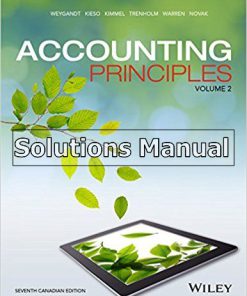Microbiology A Laboratory Manual 10th Edition Cappuccino Solutions Manual
$26.50$50.00 (-47%)
Microbiology A Laboratory Manual 10th Edition Cappuccino Solutions Manual.
You may also like
Instant download Microbiology A Laboratory Manual 10th Edition Cappuccino Solutions Manual pdf docx epub after payment.

Product details:
- ISBN-10 : 0321840224
- ISBN-13 : 978-0321840226
- Author:
Versatile, comprehensive, and clearly written, this competitively priced laboratory manual can be used with any undergraduate microbiology text—and now features brief clinical applications for each experiment, and a new experiment on hand washing. Microbiology: A Laboratory Manual is known for its thorough coverage, descriptive and straightforward procedures, and minimal equipment requirements. A broad range of experiments helps to convey basic principles and techniques. Each experiment includes an overview, an in-depth discussion of the principle involved, easy-to-follow procedures, and lab reports with review and critical thinking questions. Ample introductory material and laboratory safety instructions are provided.
Table of contents:
- Part 1 Basic Laboratory Techniques for Isolation, Cultivation, and Cultural Characterization of Microorganisms
- 1. Culture Transfer Techniques
- 2. Techniques for Isolation of Pure Cultures
- 3. Cultural Characteristics of Microorganisms
- 4. Microscopic Examination of Stained Cell Preparations
- 5. Microscopic Examination of Living Microorganisms Using a Hanging-Drop Preparation or a Wet Mount
- Part 3 Bacterial Staining
- 6. Preparation of Bacterial Smears
- 7. Simple Staining
- 8. Negative Staining
- 9. Gram Stain
- 10. Acid-Fast Stain
- 11. Differential Staining for Visualization of Bacterial Cell Structures
- Part 4 Cultivation of Microorganisms: Nutritional and Physical Requirements, and Enumeration of Microbial Populations
- 12. Nutritional Requirements: Media for the Routine Cultivation of Bacteria
- 13. Use of Differential, Selective, and Enriched Media
- 14. Physical Factors: Temperature
- 15. Physical Factors: pH of the Extracellular Environment
- 16. Physical Factors: Atmospheric Oxygen Requirements
- 17. Techniques for the Cultivation of Anaerobic Microorganisms
- 18. Serial Dilution—Agar Plate Procedure to Quantitate Viable Cells
- 19. The Bacterial Growth Curve
- Part 5 Biochemical Activities of Microorganisms
- 20. Extracellular Enzymatic Activities of Microorganisms
- 21. Carbohydrate Fermentation
- 22. Triple Sugar—Iron Agar Test
- 23. IMViC Test
- 24. Hydrogen Sulfide Test
- 25. Urease Test
- 26. Litmus-Milk Reactions
- 27. Nitrate Reduction Test
- 28. Catalase Test
- 29. Oxidase Test
- 30. Utilization of Amino Acids
- 31. Genus Identification of Unknown Bacterial Cultures
- Part 6 The Protozoa
- 32. Free-Living Protozoa
- 33. Parasitic Protozoa
- Part 7 The Fungi
- 34. Cultivation and Morphology of Molds
- 35. Yeast Morphology, Cultural Characteristics, and Reproduction
- 36. Identification of Unknown Fungi
- Part 8 The Viruses
- 37. Cultivation and Enumeration of Bacteriophages
- 38. Isolation of Coliphages from Raw Sewage
- 39. Propagation of Isolated Bacteriophage Cultures
- Part 9 Physical and Chemical Agents for the Control of Microbial Growth
- 40. Physical Agents of Control: Moist Heat
- 41. Physical Agents of Control: Electromagnetic Radiations
- 42. Chemical Agents of Control: Chemotherapeutic Agents
- 43. Determination of Penicillin Activity in the Presence and Absence of Penicillinase
- 44. Chemical Agents of Control: Disinfectants and Antiseptics
- Part 10 Microbiology of Food
- 45. Microbiological Analysis of Food Products: Bacterial Count
- 46. Microbial Fermentation
- Part 11 Microbiology of Water
- 47. Standard Qualitative Analysis of Water
- 48. Quantitative Analysis of Water: Membrane Filter Method
- Part 12 Microbiology of Soil
- 49. Microbial Populations in Soil: Enumeration
- 50. Isolation of Antibiotic-Producing Microorganisms and Determination of Antimicrobial Spectrum of Isolates
- 51. Isolation of Pseudomonas Species by Means of the Enrichment Culture Technique
People Also Search:
father of microbiology
microbiology jobs
microbiology and immunology
microbiology articles for students
aseptic technique microbiology
applied microbiology and biotechnology
applied and environmental microbiology












